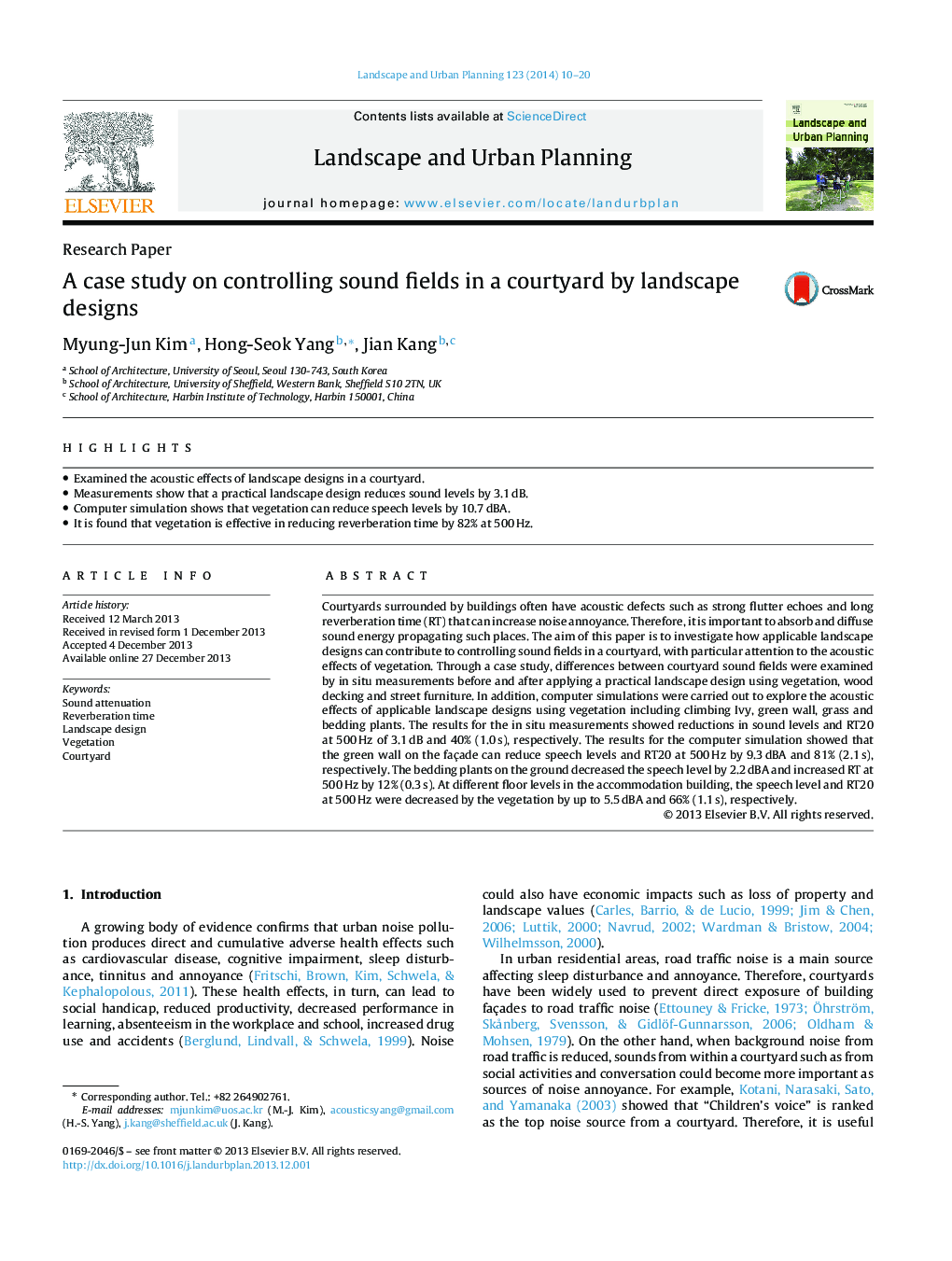| Article ID | Journal | Published Year | Pages | File Type |
|---|---|---|---|---|
| 7461672 | Landscape and Urban Planning | 2014 | 11 Pages |
Abstract
Courtyards surrounded by buildings often have acoustic defects such as strong flutter echoes and long reverberation time (RT) that can increase noise annoyance. Therefore, it is important to absorb and diffuse sound energy propagating such places. The aim of this paper is to investigate how applicable landscape designs can contribute to controlling sound fields in a courtyard, with particular attention to the acoustic effects of vegetation. Through a case study, differences between courtyard sound fields were examined by in situ measurements before and after applying a practical landscape design using vegetation, wood decking and street furniture. In addition, computer simulations were carried out to explore the acoustic effects of applicable landscape designs using vegetation including climbing Ivy, green wall, grass and bedding plants. The results for the in situ measurements showed reductions in sound levels and RT20 at 500Â Hz of 3.1Â dB and 40% (1.0Â s), respectively. The results for the computer simulation showed that the green wall on the façade can reduce speech levels and RT20 at 500Â Hz by 9.3Â dBA and 81% (2.1Â s), respectively. The bedding plants on the ground decreased the speech level by 2.2Â dBA and increased RT at 500Â Hz by 12% (0.3Â s). At different floor levels in the accommodation building, the speech level and RT20 at 500Â Hz were decreased by the vegetation by up to 5.5Â dBA and 66% (1.1Â s), respectively.
Related Topics
Life Sciences
Agricultural and Biological Sciences
Ecology, Evolution, Behavior and Systematics
Authors
Myung-Jun Kim, Hong-Seok Yang, Jian Kang,
